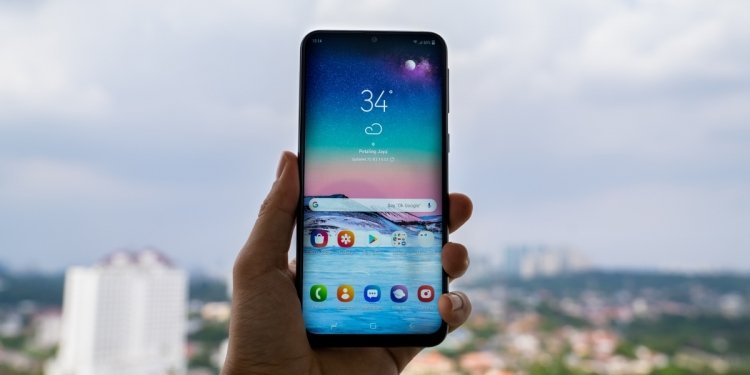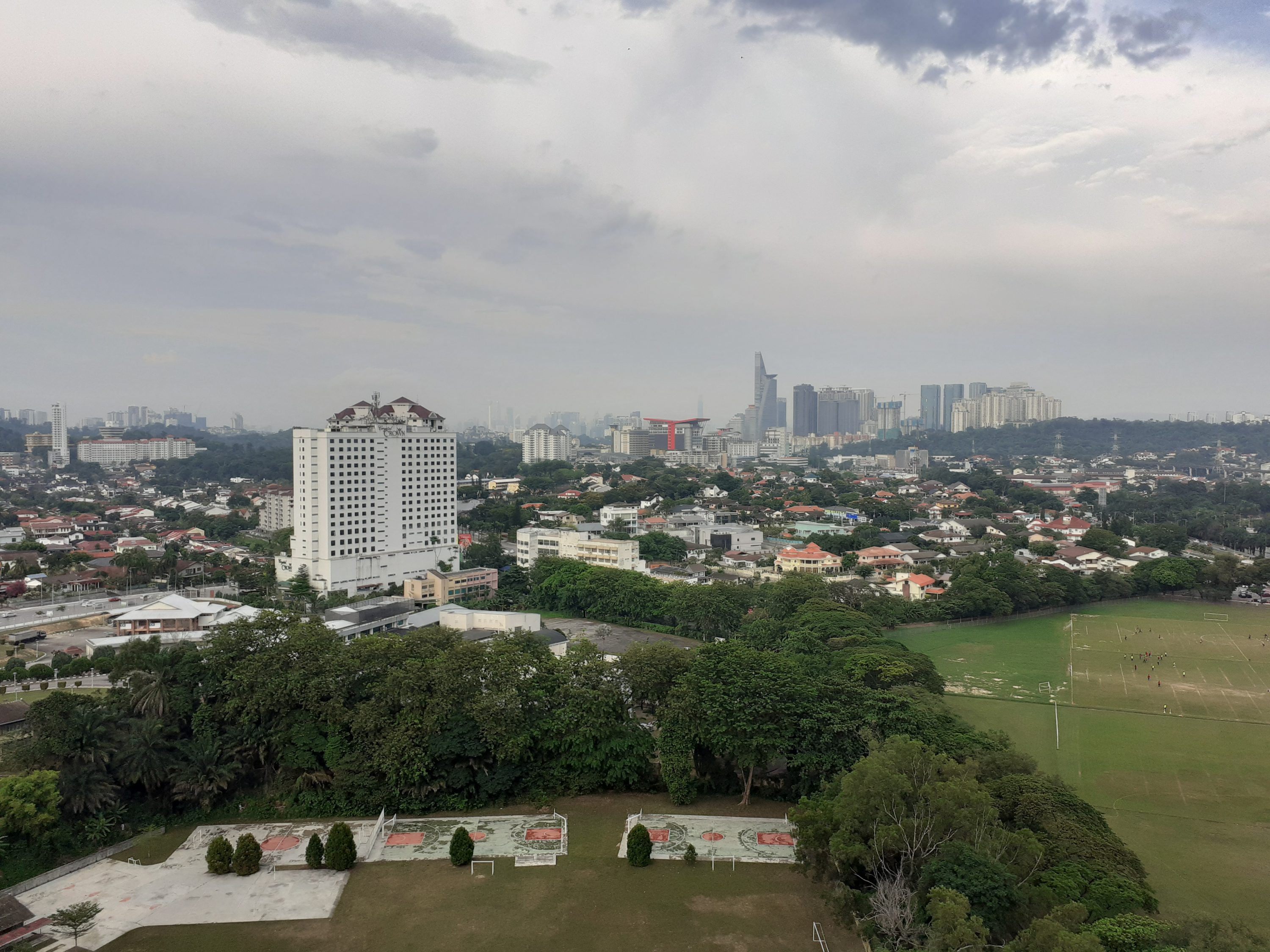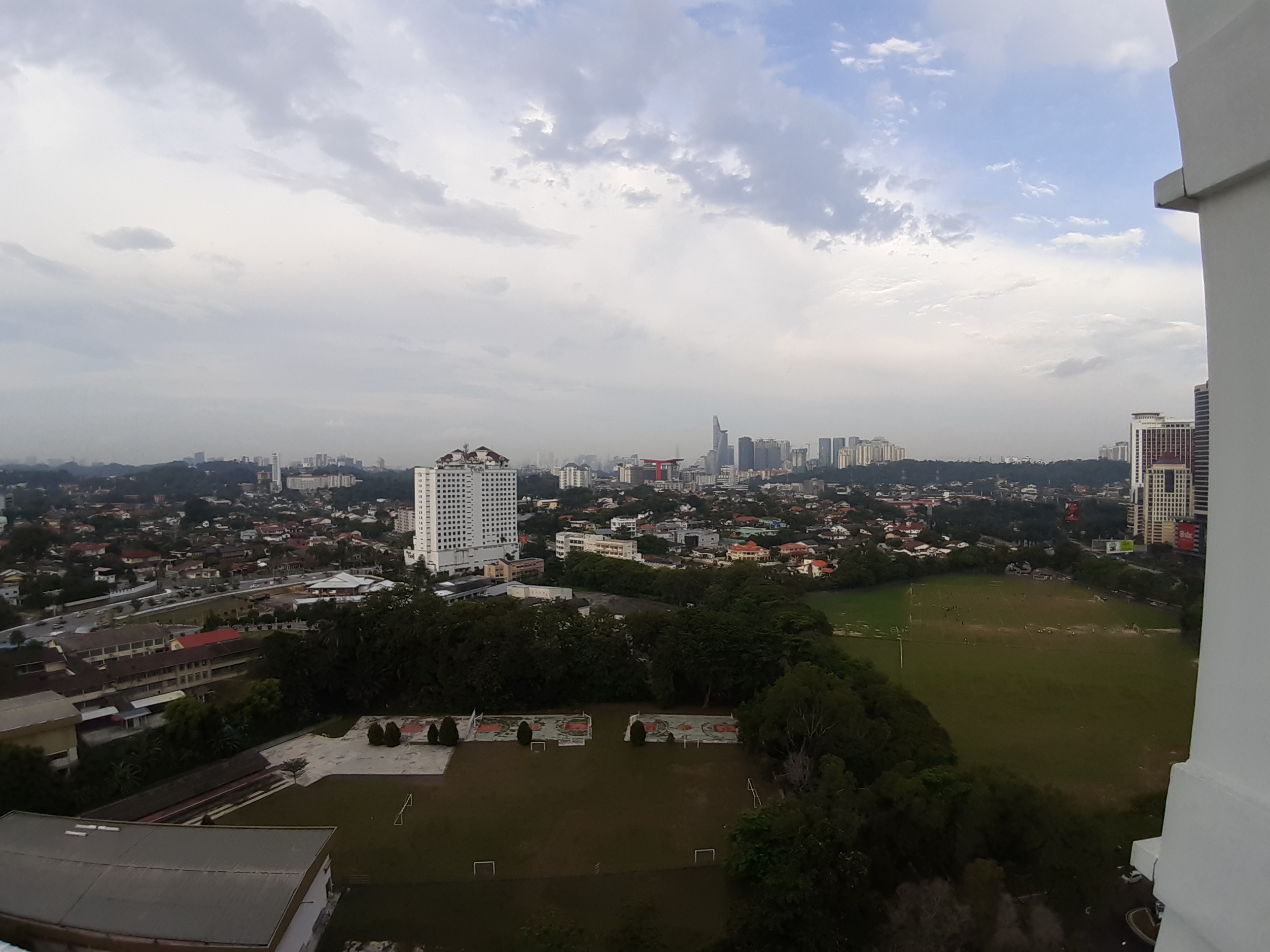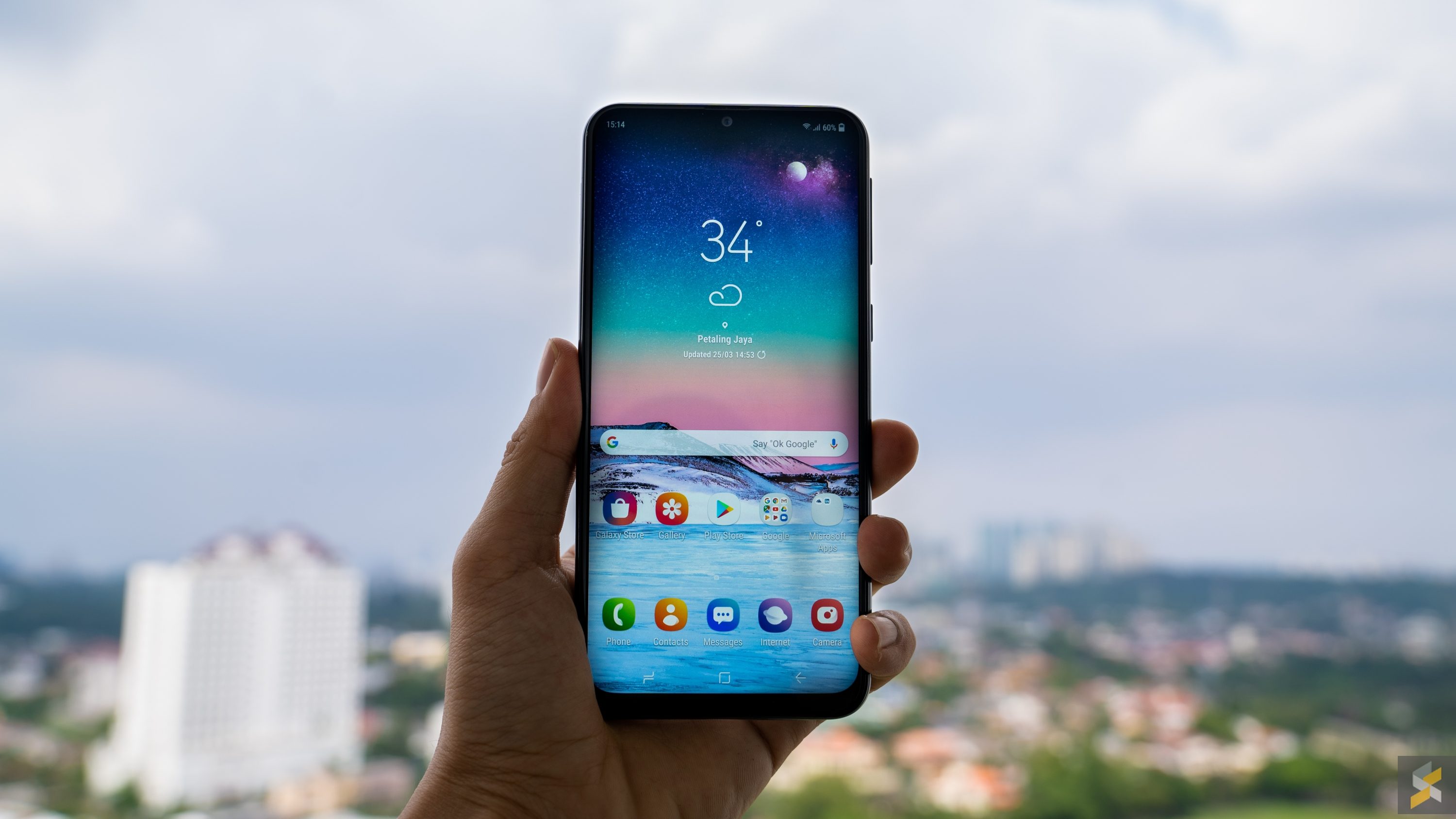
It wasn’t that long ago that the thought of Samsung launching an affordable smartphone that gave you good value for money was one we’d all chuckle at. But then the company launched their refreshed mid-range lineup in India, and we were all pretty shocked. Today, I take a closer at one of these devices. It’s called the Samsung Galaxy M20, and it has a massive battery, good amount of memory and is priced below RM800.
Off to a great start
On paper, the Galaxy M20 looks like a really solid device for its RM799 price tag. Up front, the smartphone features a 6.3″ display with slim bezels, that pushes a resolution of Full HD+. There is a tiny notch at the top because this phone utilises Samsung’s Infinity-V screen layout, but it’s really not obtrusive at all.
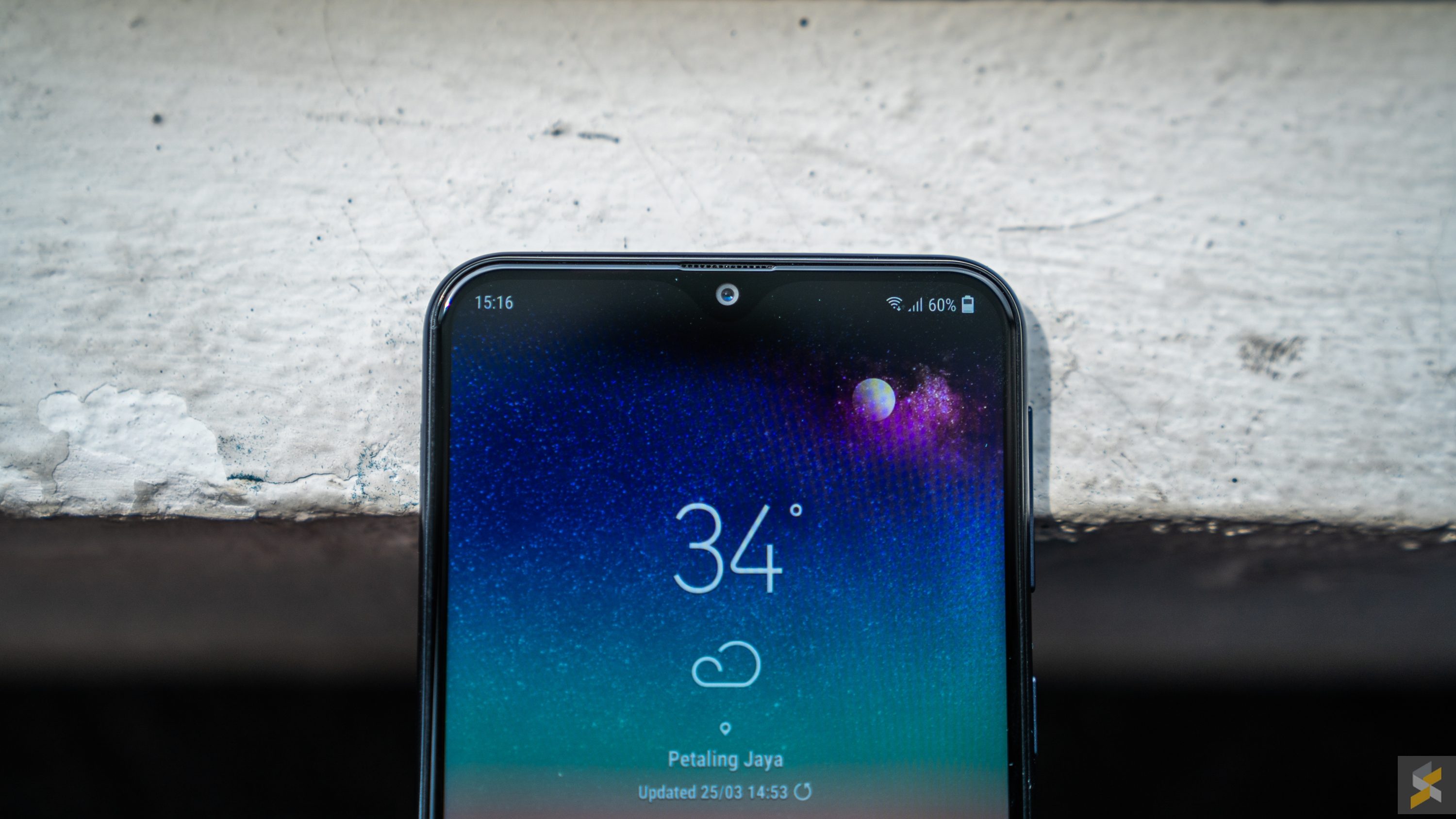
This screen has pretty good viewing angles, and looks as sharp as a Full HD+ screen should look. I did find that the auto brightness setting on my unit was a little wonky as it always had the screen a little too dim for my liking, but if you flick it to manual, this display definitely gets bright enough for outdoor viewing.
Inside, the Galaxy M20 packs a 14nm Exynos 7904 octa-core processor that’s mated to 4GB of RAM and 64GB of internal storage. In Malaysia, we’re only getting this memory variant, but considering the price point, I’m not complaining because it’s right up there with the rest of the competition. What’s more, it also supports memory expansion via a dedicated microSD card slot on its triple slot SIM tray.
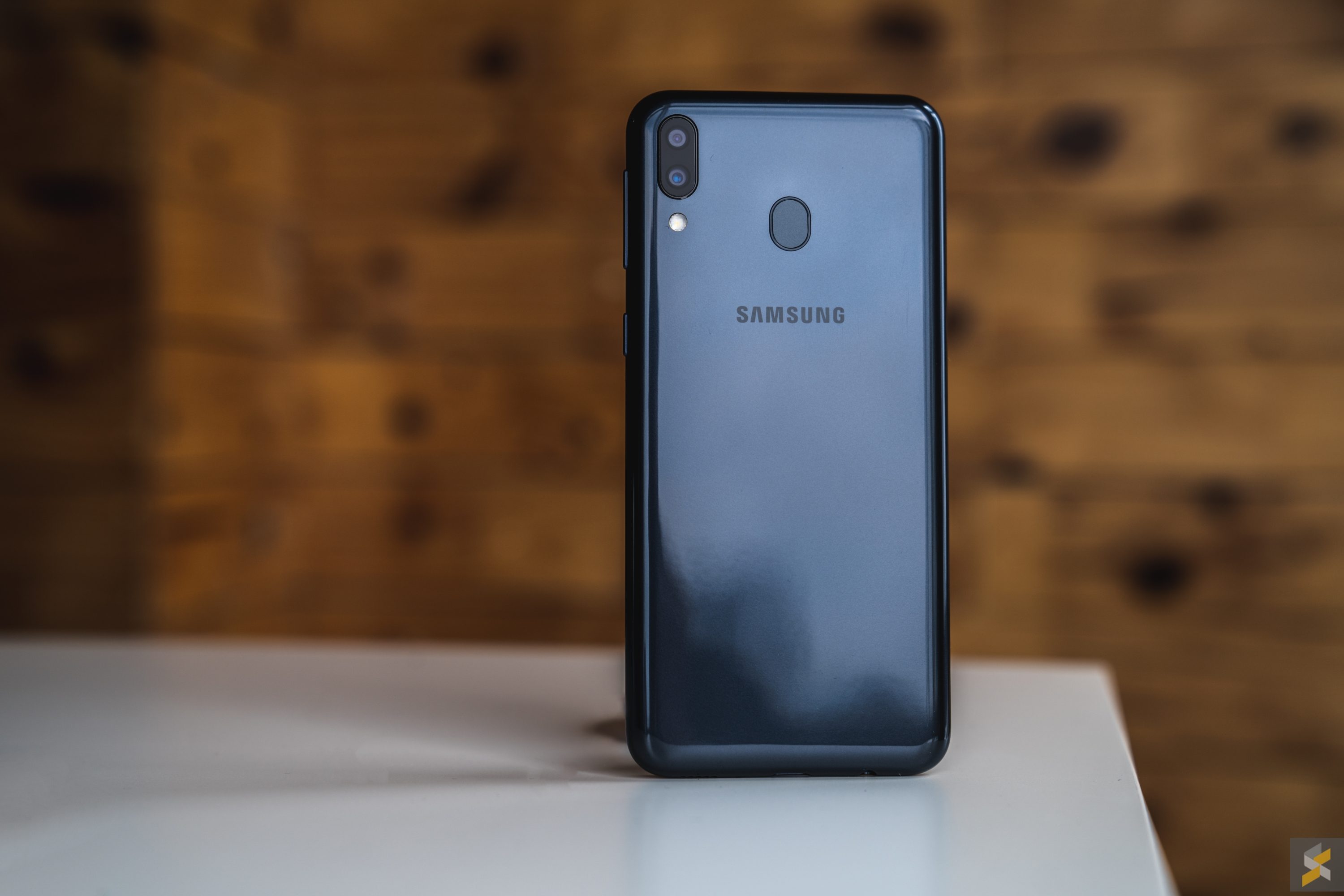
Regarding performance, I haven’t run into any notable problems with the Galaxy M20 yet. Of course, my time with the smartphone has been brief, so I can’t tell you how well this will hold up over time just yet. I’m also curious on how the smartphone’s Exynos 7904 processor will perform in graphic-intensive mobile games, and how frugal it will be with its power consumption. I haven’t had any experience with this particular processor, so I can’t really pull from previous experiences.
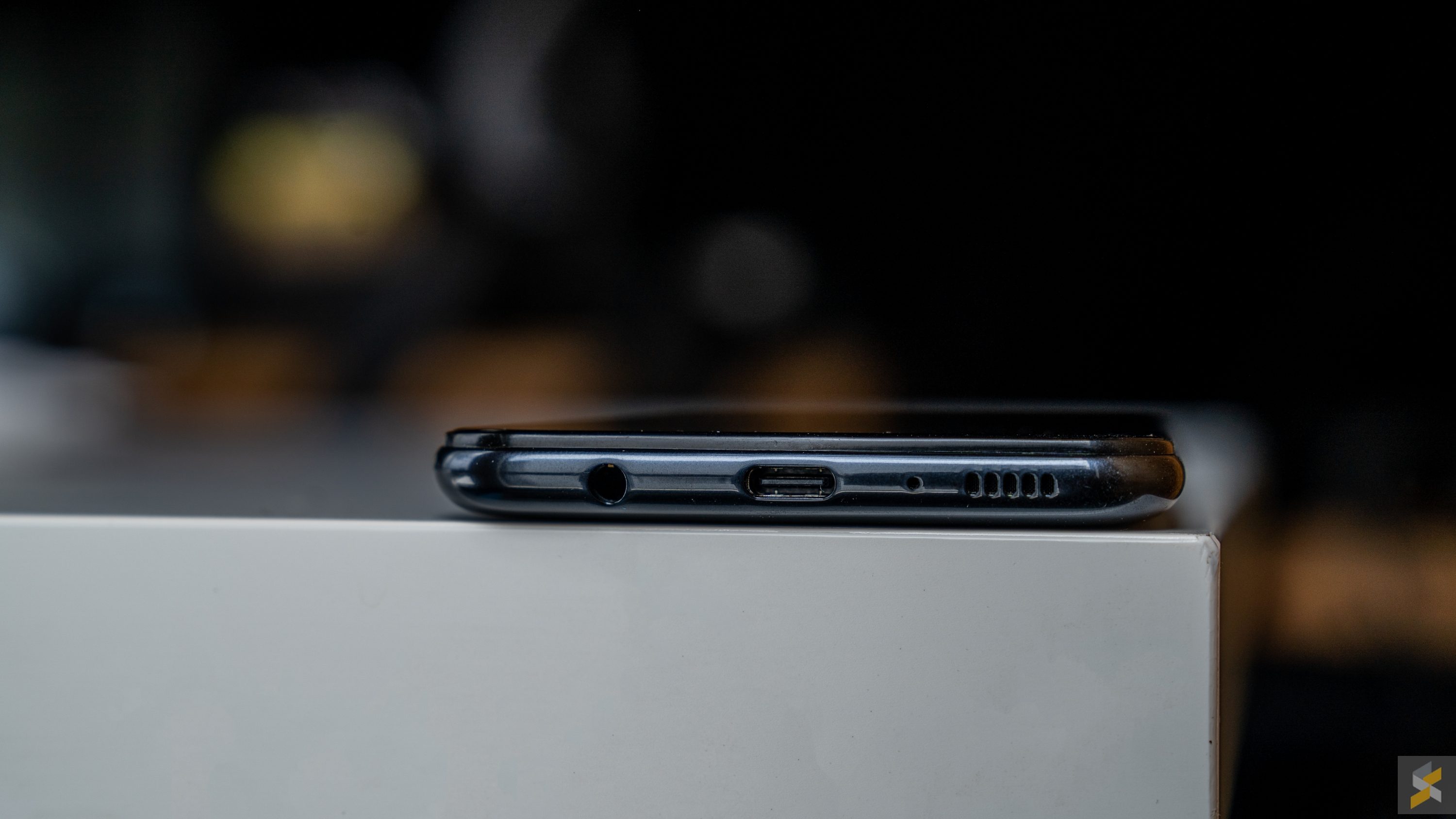
That said, I don’t suspect there will be huge issues with battery life because one of this handset’s biggest selling features is its massive 5,000 mAh battery. This battery also charges via USB-C and supports 15W fast-charging to boot.
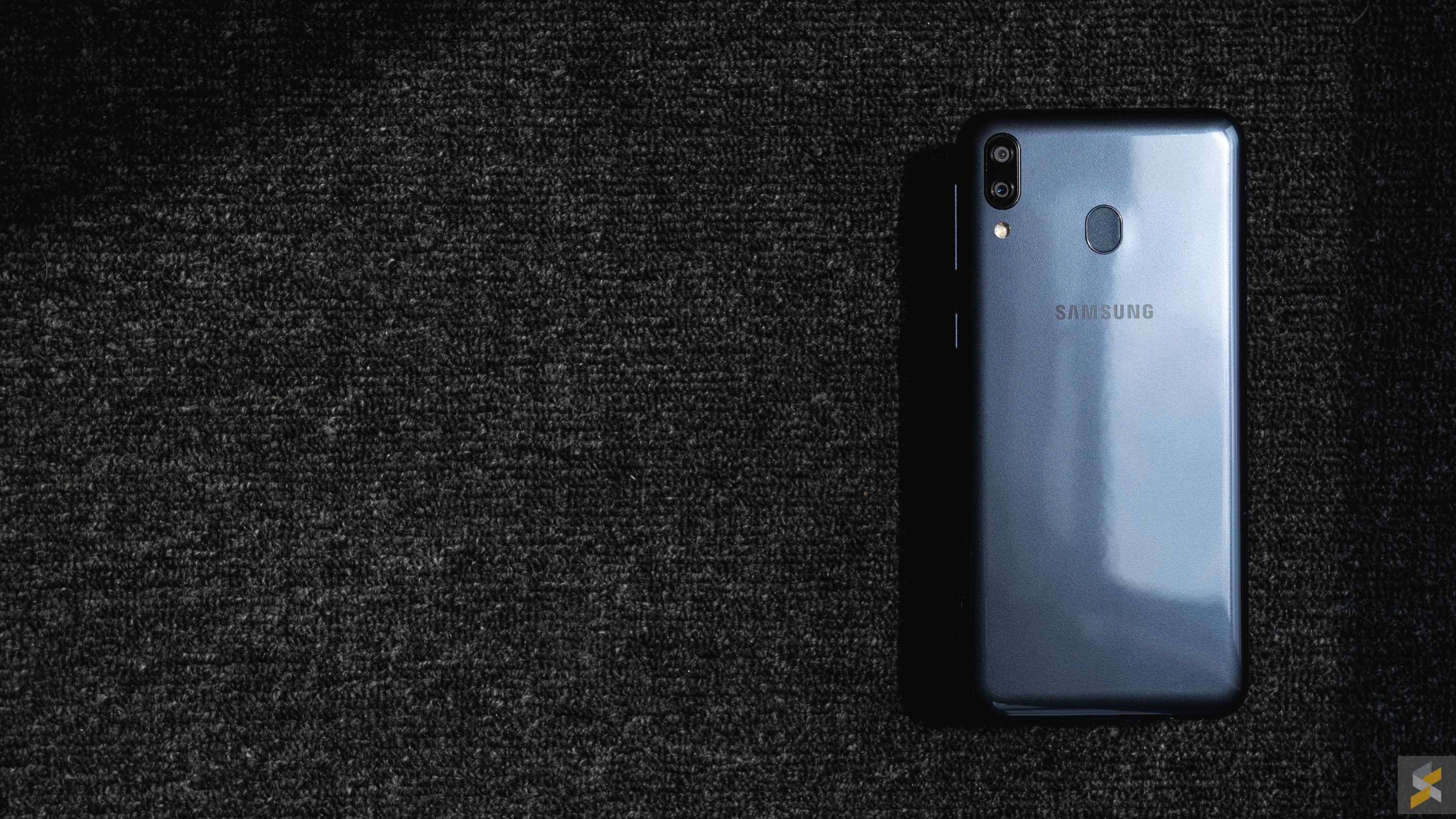
Questionable camera
For photography, Samsung’s equipped the Galaxy M20 with a dual camera setup at the back. You have the main 13MP f/1.9 aperture camera with a wide field of view that’s complemented by the secondary 5MP camera with an ultra-wide field of view.
While I appreciated the fact that Samsung actually gave us a functional secondary camera that gives us a different perspective, I have to say that the image quality left me sorely disappointed. Images from the main 13MP shooter is actually pretty decent, and around what you’d expect for a sub-RM800 smartphone. But that ultra-wide camera produces images that look like they came right out of a security camera, not a smartphone camera. Here’s a side-by-side comparison of the exact same scene:
Keep in mind, this was shot in pretty much the best kind of lighting condition you can get short of the golden hour. Still, I won’t give it too hard of a time because I haven’t had the chance to properly shoot with this smartphone’s camera yet, but let’s just say that we’re not off to a great start.
I also gave the smartphone’s Live Focus feature a try. Live Focus is basically Samsung’s take on Portrait Mode where the phone captures an image of a person and/or object and blurs the background to help separate your subject.

The subject separation itself is pretty reasonable, but the aggressive beautification isn’t something that I’m into.

I shot this on the camera’s default settings, which had beautification at a level 2. If this is level 2, I’m kinda worried about what it would look like maxed out. This aggressive beautification is something I faced when I used the 8MP selfie shooter too.

Though, I guess no amount of beautification could get rid of my massive, angry, red pimple right in the middle of my forehead.
If only the external was as good as the internal
Usually, I wouldn’t go into this aspect of a smartphone at this price point. But, the fact is that affordable phones these days can feel really, really good. Whether it’s through creative use of cheap materials or just straight up using good materials, cheap phones often don’t feel cheap anymore.
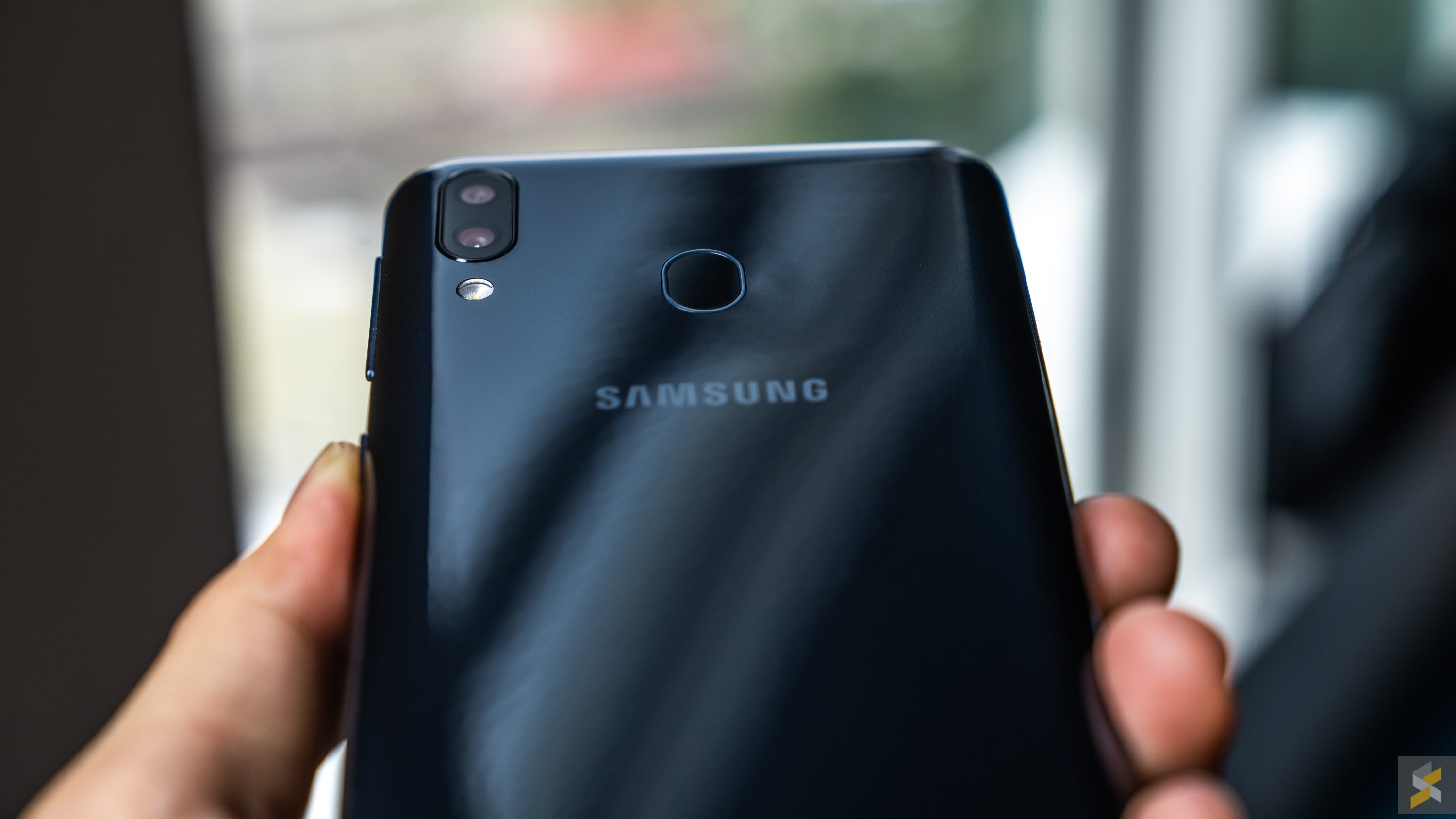
Unfortunately, the Galaxy M20 isn’t one such phone. Holding it in the hand, you’ll immediately be able to feel that this isn’t an expensive device.
I mean, it seems to tick the right boxes. It’s nice and comfortable in the hand with its rounded edges, and Samsung’s opted for the glossy shiny approach that usually goes a long way in making a phone feel expensive. And, it also feels relatively sturdy. But, the problem is, the phone just doesn’t feel good.
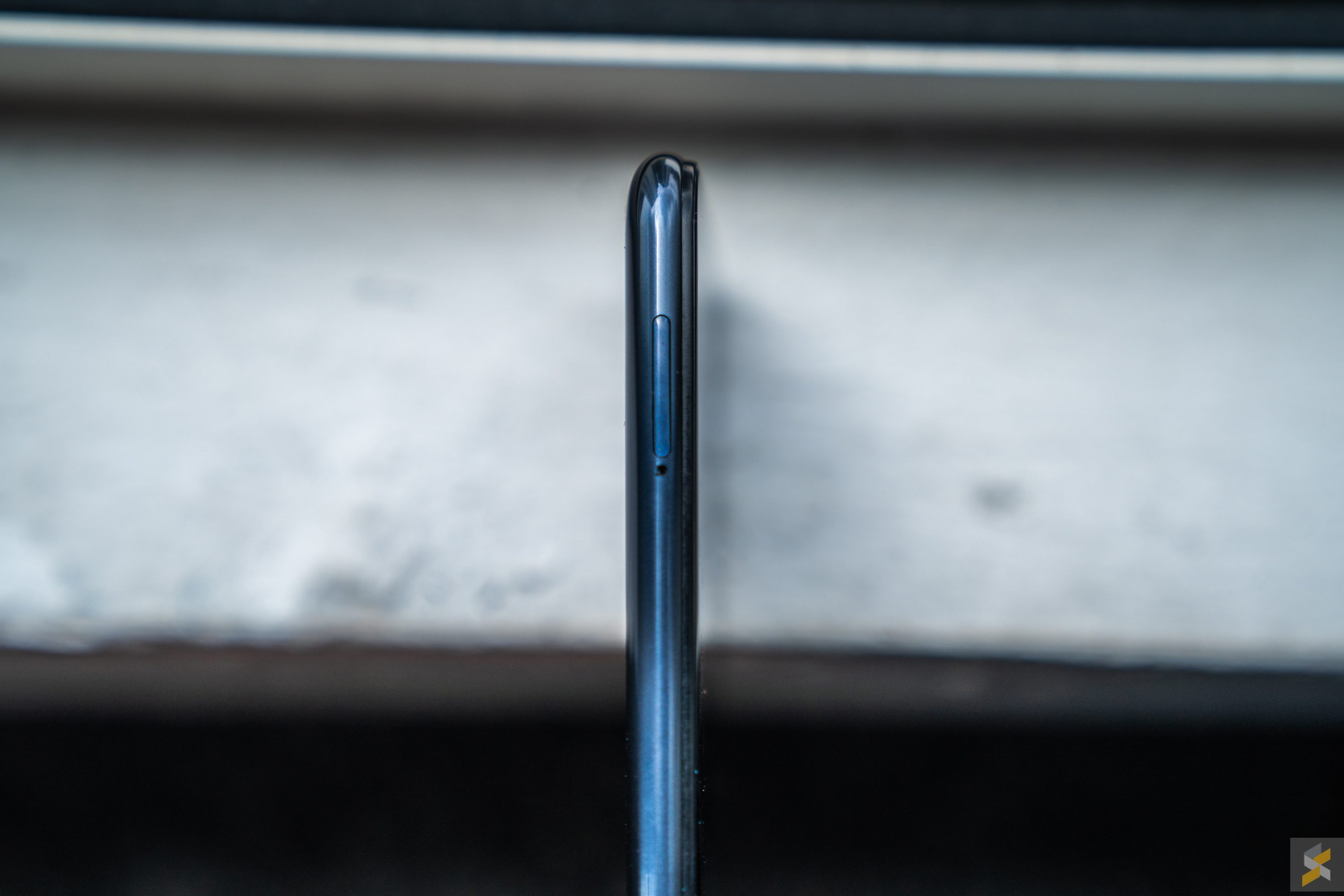
Unlike the Galaxy A30 and A50, the M20 doesn’t have a glasstic back. It looks like it’s just a simple plastic body that wraps around the edges. And that plastic feels unmistakably plasticky.
Hold it next to a Redmi Note 7 — which is also RM799 for the 4GB+64GB model — and the difference is night and day. It’s honestly quite disappointing because we know that Samsung can make gorgeous, well-built smartphones.
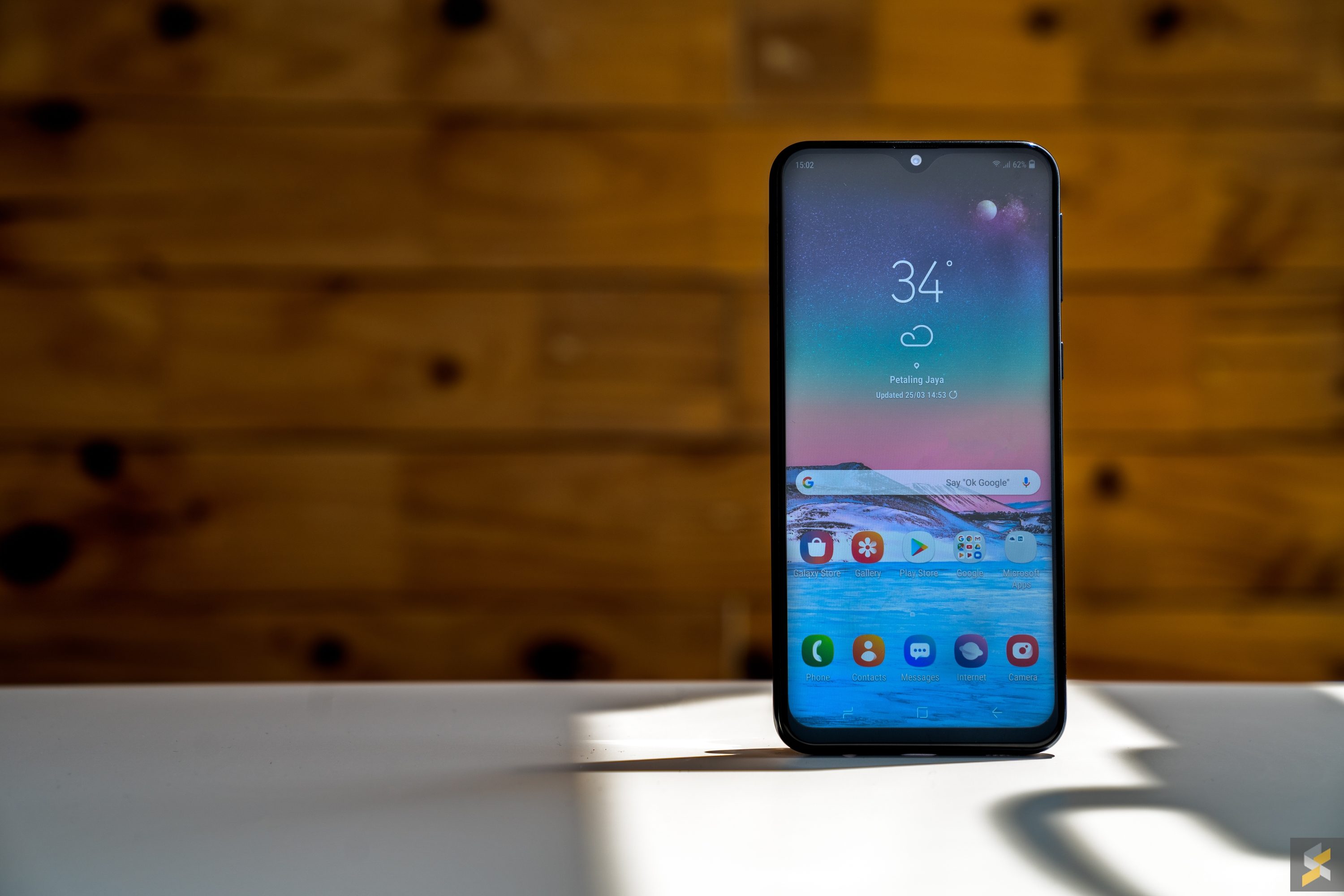
So, what do we have here?
The sub-RM1,000 smartphone market is one of the most competitive segments to sell a handset in, and it’s one that — in my experience — Samsung haven’t been the best at competing from a performance-per-ringgit standpoint. Their handsets at this price point have typically been grossly underpowered or overpriced. Sometimes, both of those come together in a handset that I just don’t understand.
But with the Galaxy M20, things are a little different this time around. You’ve got a smartphone with a solid screen, performance, and memory configuration at a price point that actually makes sense. Then, you throw in the fact that the smartphone also features a massive 5,000 mAh battery, and suddenly you also had that extra “hero” feature that you can bank on to win people over.
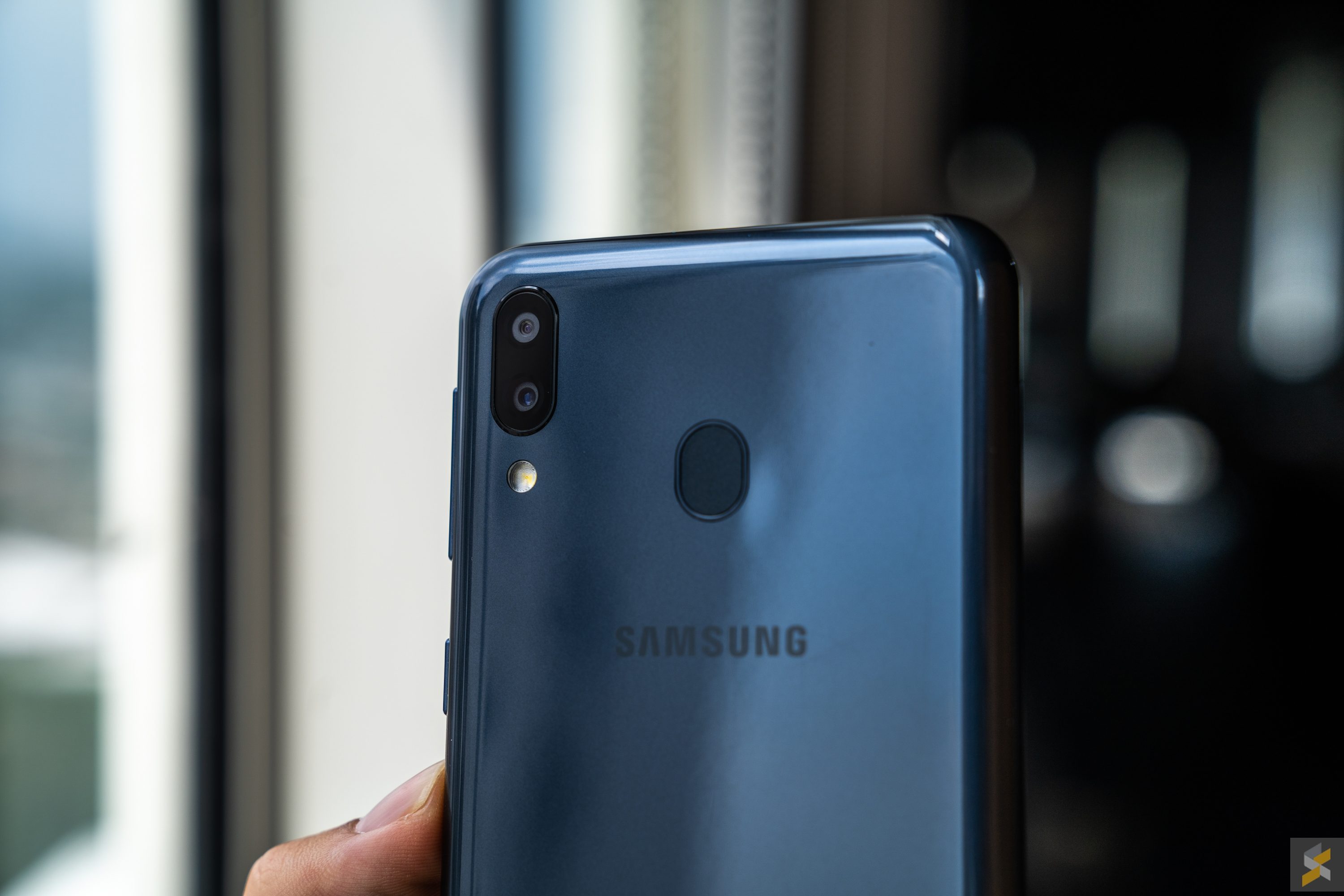
Yes, the camera isn’t particularly promising, but then again most of the smartphones at this price point aren’t well-known for stellar photography prowess. They’re typically OK and I wouldn’t say that the Galaxy M20’s 13MP main shooter is less than OK.
However, I do feel like the Galaxy M20 is a bit of a missed opportunity.
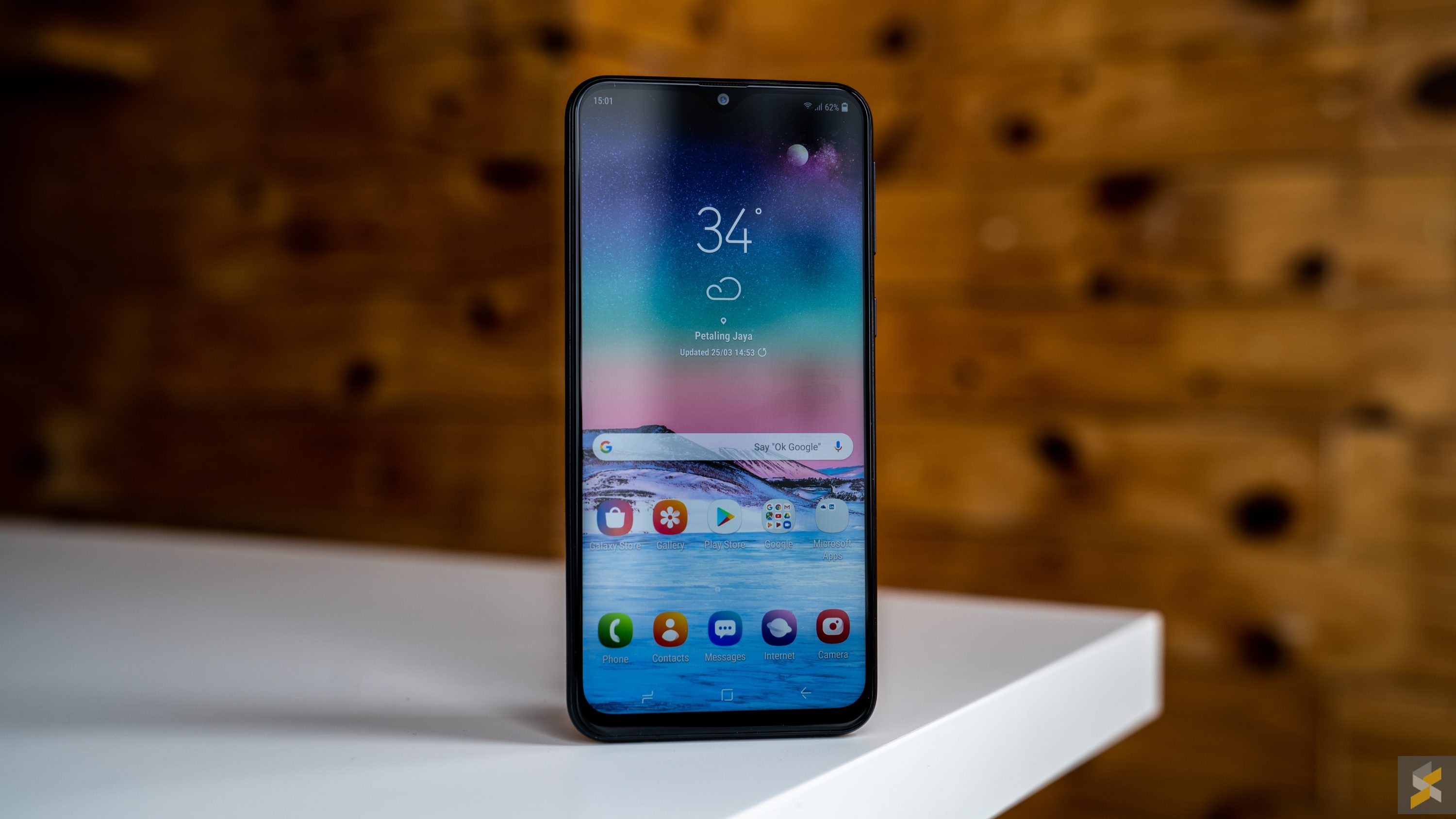
I believe that one of the biggest strengths Samsung has over many of the other smaller brands competing at this price point — besides brand recognition — is that they have an extensive smartphone ecosystem to lean on. Flagship-grade ecosystem features like Samsung Pay, for example, would have definitely been something that would help give this smartphone get the edge over the other devices at this price point. Even a simple NFC-only version of Samsung Pay (like you’d get on their smartwatches) would have been a welcomed inclusion.
Instead, Samsung’s new mid-ranger will have to duke it out with everyone else in the mud. But, I suppose the good thing is that this smartphone doesn’t seem like it will fair too badly, and that’s something I never thought I’d say about an affordable Samsung smartphone.

